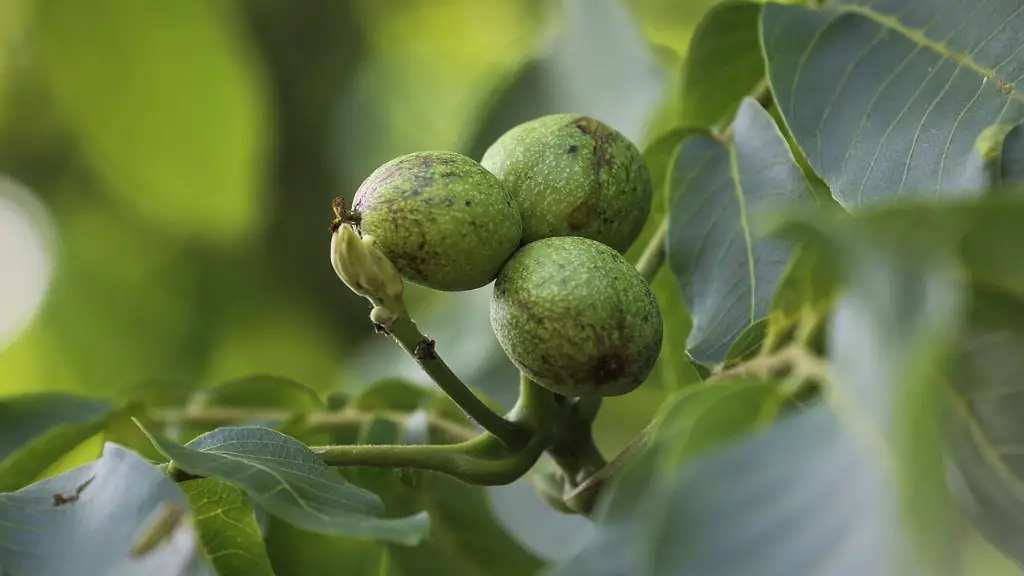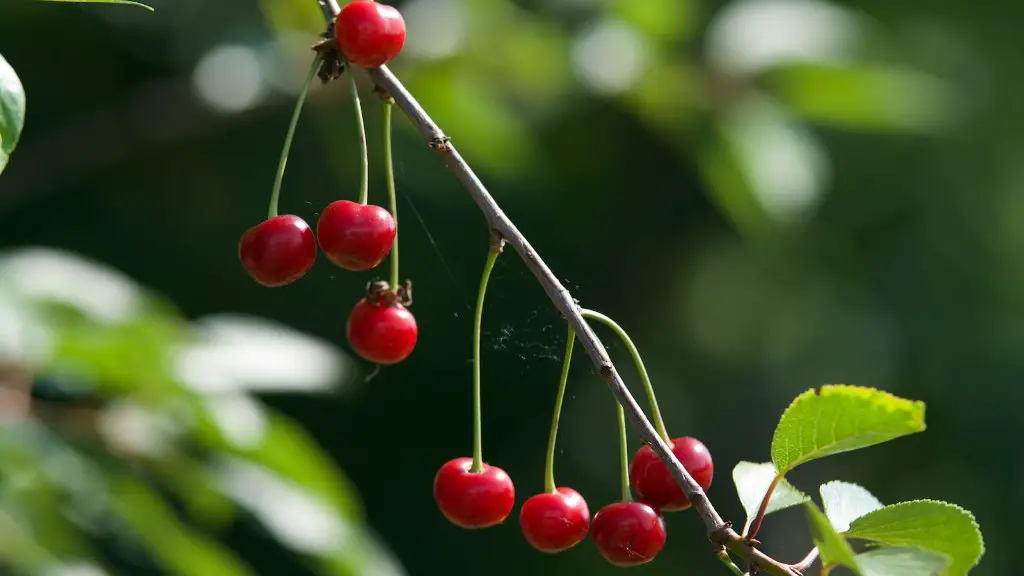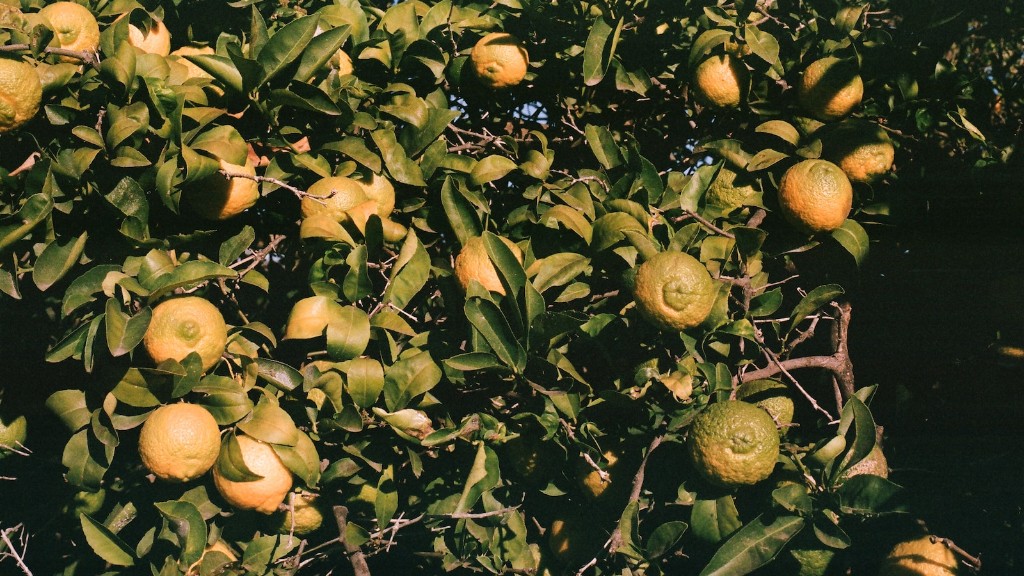Avocados are one of the most popular fruits today, and their deliciousness is often cited as one of the major reasons why they are
treasured. But have you ever wonder when an avocado tree gives fruit? Well, the answer is actually very simple. Avocado trees
will usually start to give fruit in three to four years, depending on the type of tree and the growing conditions.
Avocado trees are a fussy fruit – they require just the right amount of sunlight, temperature, and water to properly thrive
and give fruit. While there are some avocado trees that can bear fruit the first year, most generally require 3-4 years to
become mature enough to give their first harvest. Once the tree has ripened and established its first flowers, the average
flowering and fruiting process takes about 9 months.
The types of avocados will also affect when the tree bears fruit. For instance, Hass avocados tend to yield their first crop
from three to four years and can possibly start to produce a second harvest in under a year. Smaller types of avocados, like
Gwen and Stewart avocados, are usually the quickest to bear fruit, taking an average of 2-3 years.
While avocado trees may take a while to bear fruit, there are several things you can do to speed up the process. One of the
most important factors for any tree is the surrounding environment. Avocado trees require a warm, temperate climate and
consistent watering to remain healthy and produce fruit. They also need full sunlight to reach their full fruiting potential,
which can be easily accomplished with some regular pruning.
Controlling the environment is not the only way to encourage your avocado tree to bear fruit. Careful pruning can also help
by creating an environment which encourages pollination and maintains air circulation. This is especially important for
avocado trees because they are self-pollinating and require a delicate balance of air circulation, light, and water.
Additionally, you can use a method called girdling to help speed up the fruiting process. This process involves cutting away
a narrow band of bark around the trunk of the tree, which can help reduce the size of the tree and stimulate flowering.
However, this process should only be done by a trained professional and can cause further damage to the tree if not done
properly.
Ultimately, with just the right combination of environment and care, avocado trees can yield fruit from three to five years.
Soil Requirements for Avocado Trees
While proper growing conditions are necessary for a successful avocado harvest, the soil can also play a pivotal role. It is
important to know the correct soil requirements for an avocado tree, as different varieties of avocados require different
soil qualities to grow and produce fruit.
Generally, the soil needs to be well-drained, have a texture that is somewhere between sand and clay, and have a pH level
between 5.8-6.3. Additionally, the soil should be rich in organic matter and have plenty of nitrogen, phosphorus, and
potassium to help the tree bear fruit. One way to make sure that your soil has the right elements is to incorporate some
compost into the soil each year.
If your soil does not fall within these parameters, it is important to amend it through fertilization. The use of organic
fertilizers, such as fish emulsion or compost tea, will help to enrich soil that is already slightly alkaline or acidic
and can help the tree bear more fruit. However, it is important to note that fertilization may not be enough to make up for
soils that are heavily compacted or rely heavily on sand or clay.
Additionally, you should also be mindful of the salinity levels of the soil. Avocado trees thrive in lower-saline soils and
can suffer from poor performance when planted in soils with high salinity levels. For this reason, it is often best to plant
avocado trees away from coastal areas, as the salt spray can lead to increased salinity levels in the soil.
Taking the time to properly assess the soil and make the necessary amendments can go a long way towards ensuring you have a
healthy avocado tree that will bear fruit for years to come.
How To Choose The Right Avocado Variety
Choosing the right variety of avocado for your region is essential for a successful harvest. The growing conditions for
different avocado varieties can vary significantly, and you need to make sure that you select a variety that will thrive in
your climate.
One of the most important factors to consider is the type of cold hardiness that a particular variety of tree is equipped
with. Some varieties are more tolerant of cold temperatures than others, which is extremely important depending on your
region and climate. Additionally, some varieties do better in drier climates and some in more humid environments, so you
should make sure to select something that fits into your regional climate.
Another factor to consider is the timing of the avocado harvest. Different varieties of avocados have different fruiting
schedules, so it is a good idea to do your research on the different varieties in order to make sure that you are choosing
something that will work with your preferred harvest schedule.
Ultimately, choosing the right variety of avocado for your region can help ensure that you get the best possible harvest and
the highest quality fruit.
Avocado Tree Care Maintenance Tips
In order to maximize your avocado harvest and ensure that your tree remains healthy and productive, it is important to know
how to properly care for your tree. There are a few key components to proper tree care maintenance and following these
tips can help you get the most out of your avocado tree.
The first step is to maintain the soil quality. Avocado trees prefer well-draining soil that is slightly acidic, so it is
important to make sure that your soil is of the best quality possible. You can do this by adding organic matter to the
soil, such as compost or mulch, and fertilizing regularly.
The next step is to ensure proper pruning and trimming of your tree. While it is important to trim away dead wood and
maintain the desired shape of your tree, it is equally important to make sure not to over-trim. Pruning too much can leave
your tree significantly weakened and more vulnerable to disease and pests.
Watering is also an important part of maintaining your avocado tree. Not only is it important to keep your tree properly
hydrated, but it is also important to make sure that you are not overwatering. Too much water can cause the roots of the
tree to rot and can lead to other problems like mildew or insect infestations.
Ultimately, the key to successful avocado tree care is to develop a regular care regimen that takes into account the
needs of your specific tree.
Tips For Harvesting Avocados
Knowing when to harvest your avocado crop is essential for taking full advantage of your tree’s yield. Avocados require
special care during the harvest process, and following a few key tips can help you get the most out of your crop.
The first step is to identify when your avocado is ready to be harvested. This can be determined by noting the color of
the skin and the texture as well. Generally, the skin should be dark green and the texture should be soft to the touch.
Additionally, you can also thump the avocado and it should have a hollow sound if it is perfectly ripe.
Once your avocado is ready to be harvested, the next step is to gently remove it from the tree. You should never yank or
pull the fruit, as this can damage the tree and can lead to potential problems such as disease. Instead, you should lightly
twist the fruit until it comes away from the tree.
Additionally, you should never leave an avocado on the tree for too long. Overripe fruit can cause damage to the tree and
can lead to a drop in fruit production.
Ultimately, taking the time to properly care for your avocado tree and properly harvesting fruit can ensure that you get
the highest quality and most abundant possible harvest.




